The official currency of the USA is the US dollar. There are seven denominations of banknotes and six denominations of coins in circulation. US presidents and other prominent historical figures are depicted on the currency. The official abbreviation for the US dollar is USD, but the dollar symbol is commonly used as $.
Table of Contents
Basic Information About Dollars
💲 Validity of US Dollars
Dollar bills and coins remain officially valid; however, some older or damaged notes may not be accepted in practice. These are often older notes with fewer security features.
🔄 How Much Is 1 Dollar In EUR?
One dollar is approximately $1.00. For quick currency conversion, you can use Google; simply search, for instance, “500 USD to EUR”.
Dollar Bills
There are dollar notes in circulation in denominations of $1, $2, $5, $10, $20, $50 and $100. U.S. banknotes are printed by the Bureau of Engraving and Printing, which has offices in Washington, D.C., and Fort Worth, Texas.
The paper used for printing has been supplied since 1879 by Crane and Co. of Massachusetts. On close examination, you can observe tiny red and blue filaments of various lengths. The artificial fibres are evenly placed in the paper.
Older notes, in particular, can be easily confused because they are similar in color and have the same size of 156 × 66.3 mm. Newer banknotes have more pronounced color differences and security features. The paper of all dollar notes consists of 75% cotton and 25% linen.
-
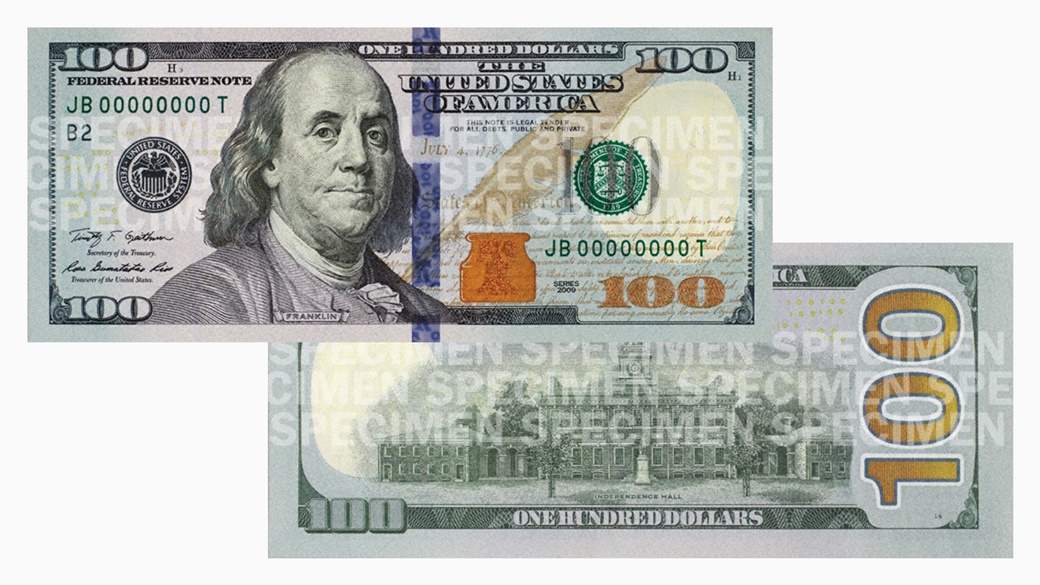
100 Dollar Bill
The first $100 bill was issued in 1862 as a United States Note. It bears a portrait of Benjamin Franklin on the obverse, hence the nicknames Bens, Benjamins, Franklins, or C-Note, after the Roman numeral 100. Benjamin Franklin was one of the founders of the United States and played a key role in the creation of the Declaration of Independence, although he was never elected President.
Along with the $10 bill, it is the only note without the portrait of a President. The reverse of the $100 bill features Independence Hall in Philadelphia.
According to 2022 statistics, 34% of the notes in circulation are $100 bills. Interestingly, the average lifespan of a $100 bill is 23 years according to data. The cost of printing a hundred-dollar bill is $0.09.
-
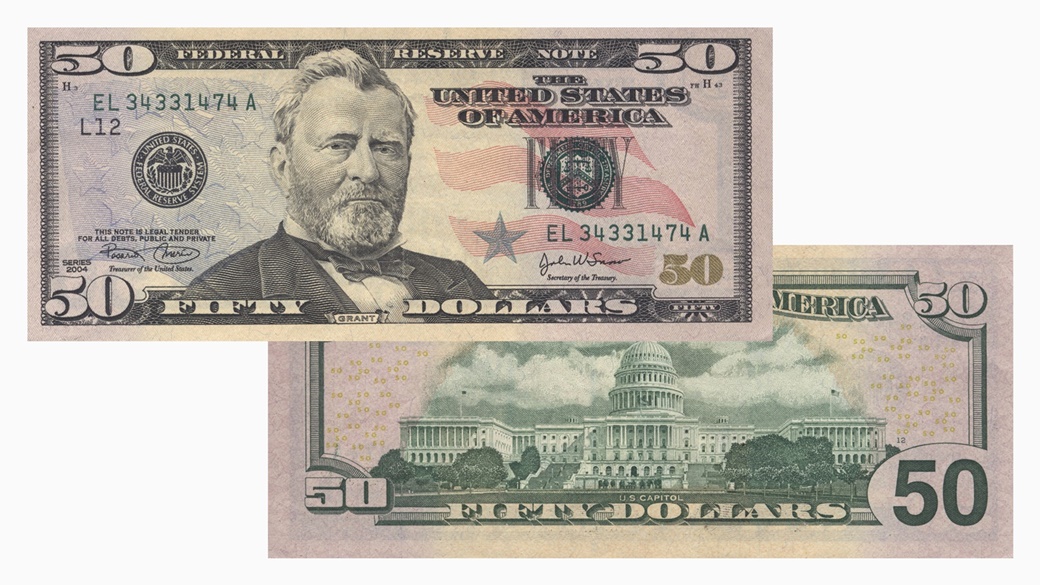
50 Dollar Bill
The obverse of the $50 bill features the 18th President of the United States, Ulysses S. Grant, with the United States Capitol on the reverse. The note is nicknamed the Grant, and was put into circulation in 1862.
The average lifespan of a $50 bill is 12 years; in 2022, the $50 bill accounted for about 5% of all notes in circulation. Printing a banknote costs $0.06.
-

20 Dollar Bill
The $20 bill depicts the 7th US President Andrew Jackson on the obverse, with a portrait of Harriet Tubman announced for 2020. However, by the end of 2024, this plan had not been implemented. The reverse side of the $20 bill depicts the White House.
The first note was introduced in 1862, and today it lasts an average of 7.8 years in circulation. Of all the notes in circulation, the $20 bill accounts for about 21%. The U.S. government pays $0.06 to produce one note.
-
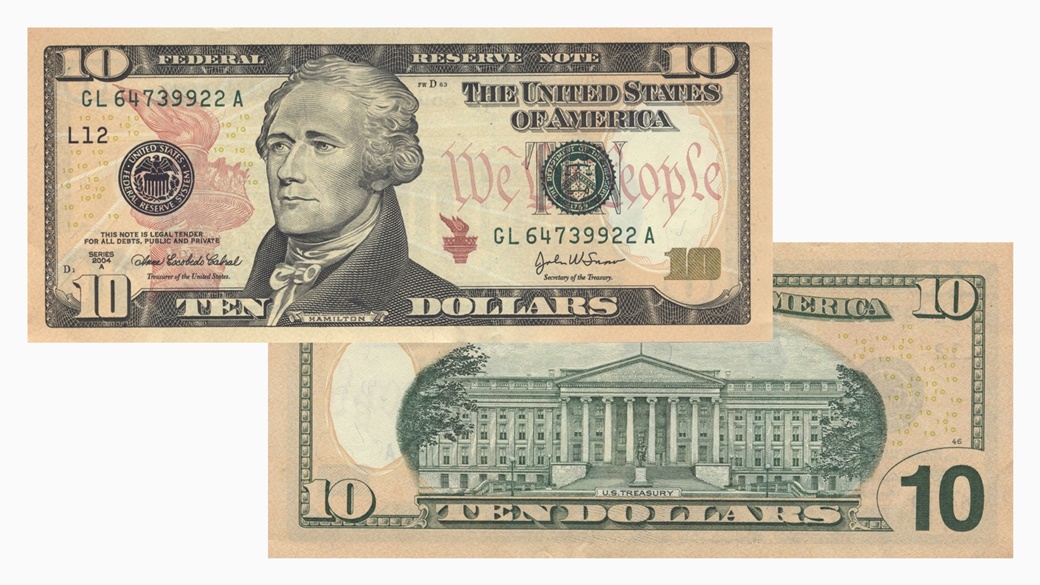
10 Dollar Bill
The face of the $10 bill bears the portrait of the first US Secretary of the Treasury, Alexander Hamilton. Together with the $100 bill, these are the only two notes that do not feature a US President. It is also the only note with a portrait facing to the right. The reverse of the note features the Treasury Department building in Washington, DC.
According to statistics, $10 bills make up 4% of all banknotes in circulation, and on average last 5.3 years. First issued in 1862, one note costs $0.06 to produce.
-
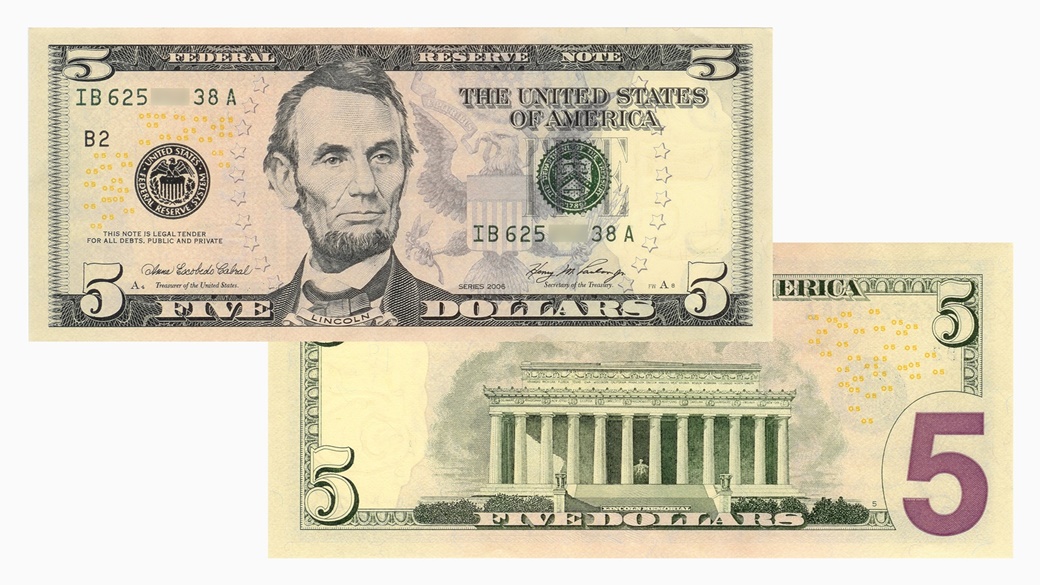
5 Dollar Bill
The US $5 bill features a portrait of Abraham Lincoln on the obverse, while the reverse side features a memorial to the President.
First issued in 1862, the note was formerly known as the “fin” note, which was the German or Jewish name for the numeral five. The average life of a five-dollar bill is 4.7 years, after which it is replaced by a new piece. About 6% of all banknotes are five-dollar notes. It costs $0.05 to produce one.
-
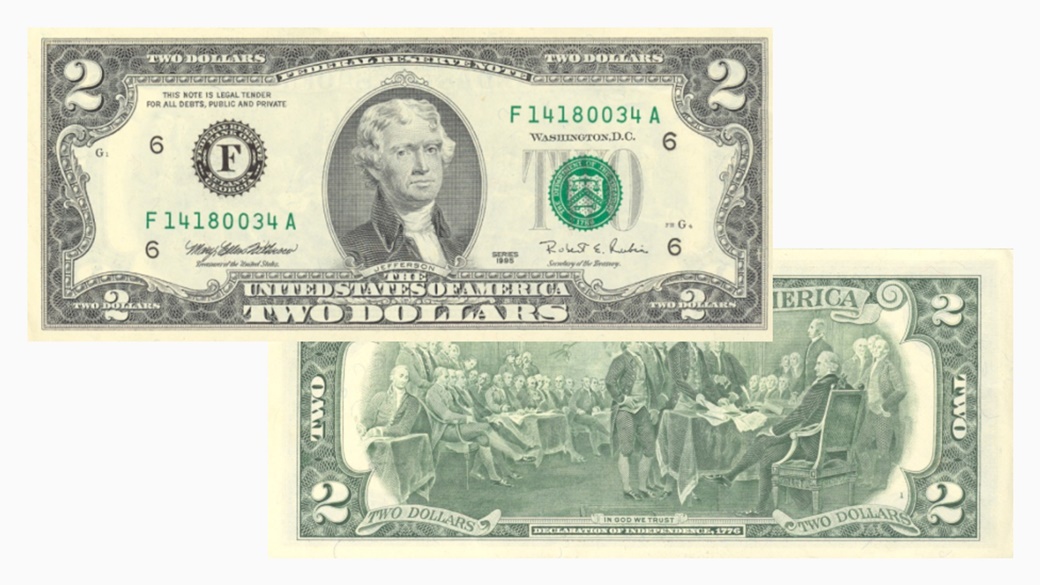
2 Dollar Bill
The two-dollar bill is a less common U.S. banknote, accounting for only 3% of the pieces issued. Merchant demand for notes of this denomination is low, and people are losing recognition of them. Occasionally, they even mistake a legitimate $2 bill for a counterfeit one.
The obverse of the note features a portrait of President Thomas Jefferson, while the reverse features a modified image of The Declaration of Independence by John Trumbull. The cost of producing one note is $0.03.
-

1 Dollar Bill
The one-dollar bill is the most commonly encountered, holding a 26% share of all banknotes in 2022. It features a portrait of President George Washington on the obverse and the US national emblem with a bald eagle on the reverse.
The current-sized one-dollar bill has been in production since 1929, and has carried the legally required motto “In God we Trust” since 1957. Nicknamed the one, single, buck, bone or bill, the note lasts only 6.6 years in circulation.
The cost of producing a dollar bill as of 2024 is $0.03.
Dollar Coins
Dollar coins are in circulation in denominations of 1 dollar, 50 cents, 25 cents, 10 cents, 5 cents, and 1 cent. They are minted by the United States Mint, with offices in Philadelphia, Denver, San Francisco, and West Point, New York. The United States Mint has a giant vault in Fort Knox, Kentucky.
The first US coins were minted in 1792. Dozens of variations of the coins are in circulation today, differing mainly in the thematic designs on their reverse sides.
-
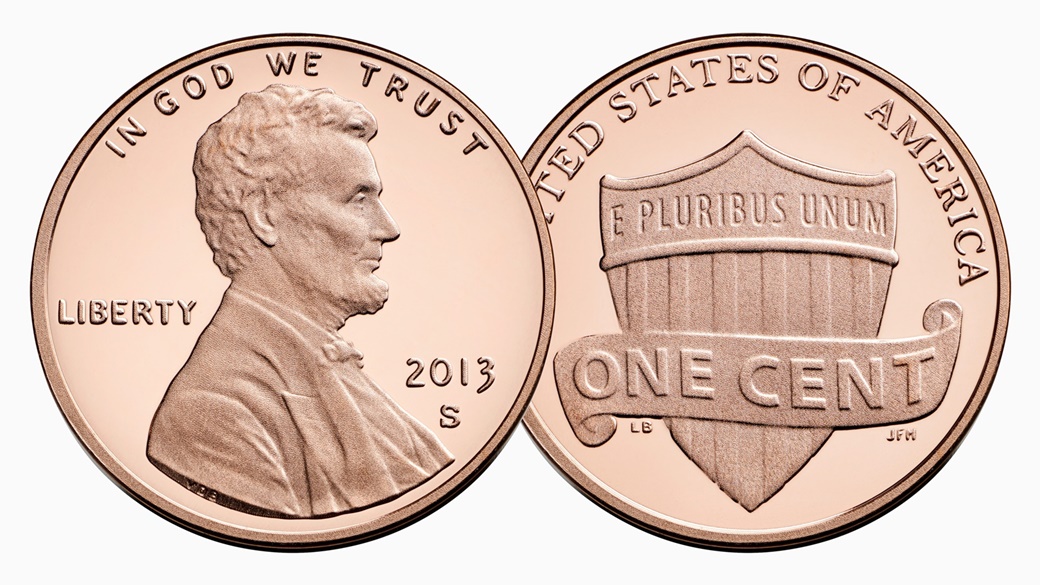
1 Dollar Coin
The one-dollar coin is minted in gold; however, instead of real gold, a copper-brass alloy is used. Silver dollar coins are also minted for collectible purposes; however, they are not commonly circulated. The dollar coin was first minted in 1794; its diameter is 26.5 mm, and its thickness is 2 mm.
The coin’s motif varies. The 2000 edition depicted Sacagawea, a member of the Shoshone tribe, who was the only woman to participate in the exploration of the American West in the early 19th century. Between 2007 and 2016, the faces of U.S. presidents alternated on the front.
Between 2009 and 2016, the reverse side bore motifs commemorating Native American contributions to U.S. history. The 2007 presidential coins featured the Statue of Liberty on one side.
On the dollar coin, you may notice a letter indicating the mint that struck the coin. The P stands for Philadelphia (the coin has been minted there since 1793), the S stands for San Francisco (since 1854), and the W stands for West Point (since 1984).
-
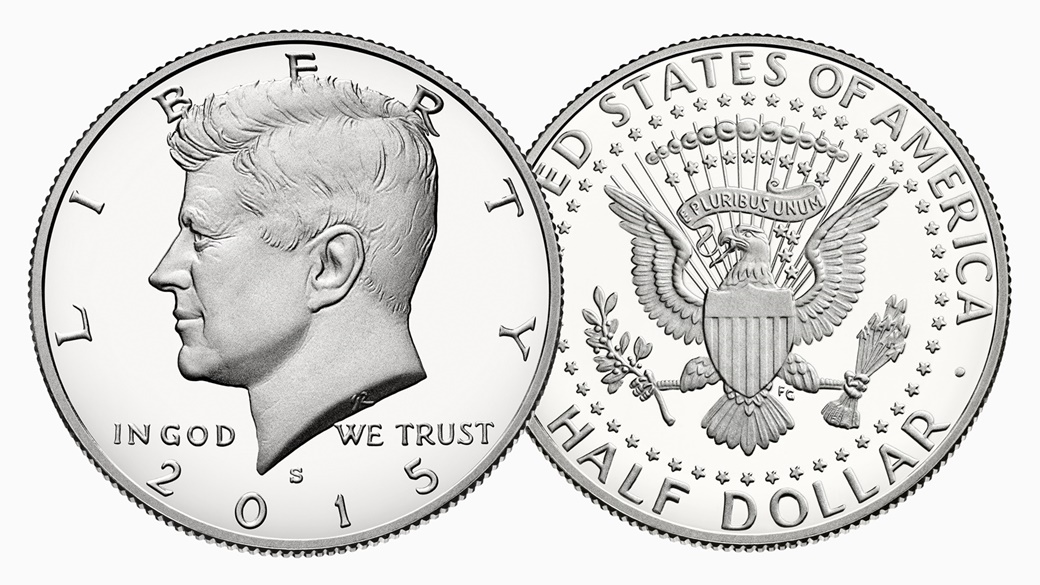
50 Cent Coin – Half Dollar, Fifty Cent
The silver 50-cent coin has a diameter of 30.61 mm, a thickness of 2.15 mm, and is decorated with 150 indentations on the edge. The coin is made of a copper-nickel alloy and weighs 11.34 grams.
The 50-cent coins are minted with a design introduced in 1964, but public interest in this coin remains low. The obverse features a portrait of President John F. Kennedy, and the reverse features the Presidential seal.
-
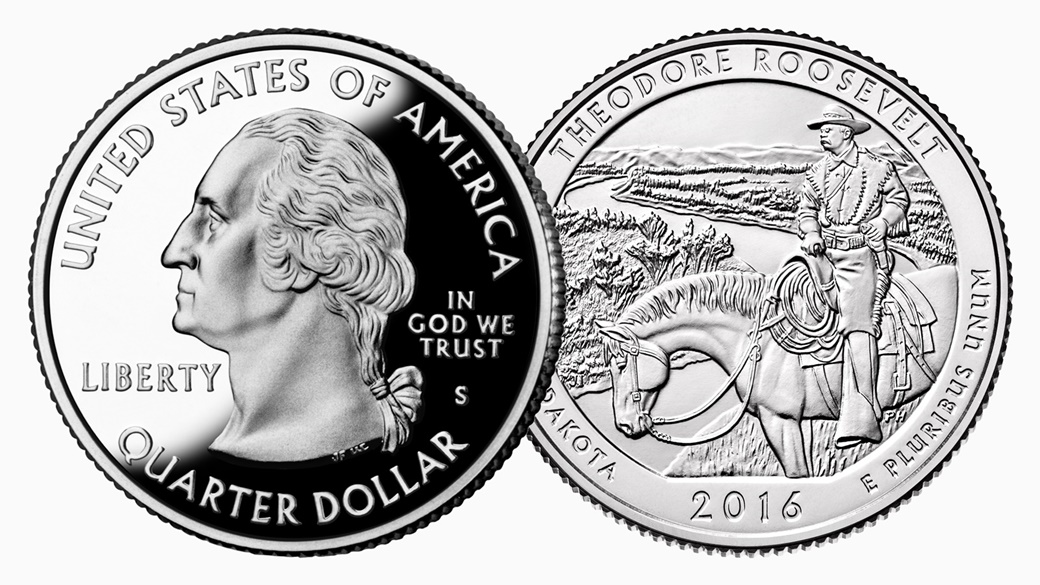
25 Cent Coin – Quarter
The 25-cent coin is silver in color, 24.26 mm in diameter and 1.75 mm thick. The quarter weighs 5.67 grams and has 119 indentations around the edge. The coin has been minted intermittently since 1796 and continuously since 1831.
The obverse of the coin bears the portrait of George Washington, with five designs alternating on the reverse each year. Between 1999 and 2009 they represented individual US states, between 2010 and 2021 they depicted US national parks. The original motif subsequently returned in 2021.
The unusual denomination of the quarter comes from 18th-century Spanish dollars, which were divisible into eight parts (eighths). Americans adopted this practice.
The production cost of a quarter in 2020 was $0.08.
-
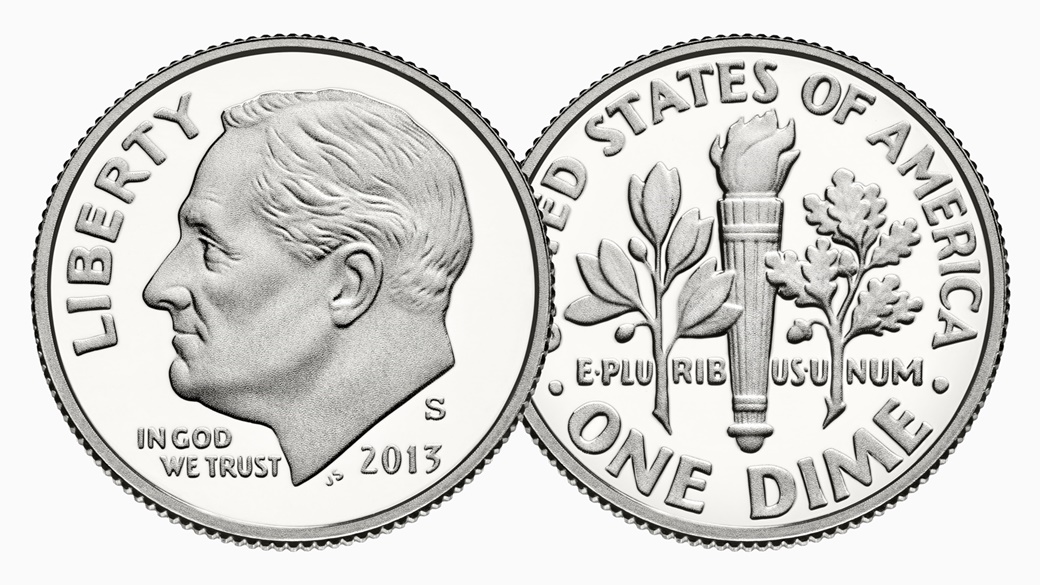
10 Cent Coin – Dime
The silver dime has been in circulation since 1796, and is made of an alloy of copper and nickel. The edge of the dime is covered with 118 indentations. The diameter of the coin is 17.91 mm, thickness 1.35 mm and weight 2.268 g.
The nickname dime comes from the French word dîme (dime, tenth). The production cost of one coin is $0.03.
The current design of the dime has been unchanged since 1946. The obverse bears a portrait of President Franklin D. Roosevelt and the inscription Liberty, while the reverse features, from left to right, an olive branch, a torch, and an oak branch.
-
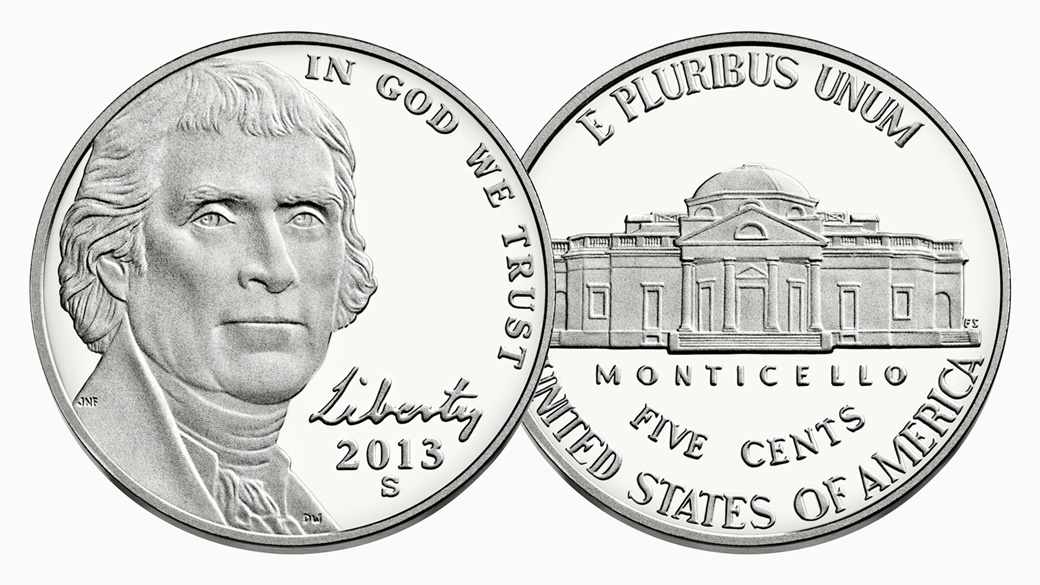
5 Cent Coin – Nickel, Five Cents
The silver nickel weighs an even 5 grams, the diameter of the coin is 21.21 mm, the thickness is 1.95 mm and the composition is an alloy of 25% nickel and 75% copper. The cost of minting one coin is $0.12, which is more than its face value.
The obverse of the nickel features a portrait of Thomas Jefferson, while the reverse features the Monticello monument near Charlottesville, Virginia. The plantation was built in 1772 by the third President of the United States.
-

1 Cent Coin – Penny
The lowest denomination US coin is copper in colour, although 97.5% of the coin is zinc. The dimensions of the penny are 19.05 mm in diameter and 1.52 mm in height. Weighing 2.5 g, the penny has been minted continuously since 1793. The symbol for the cent is ¢.
The cost of minting a single coin in 2024 was $0.03, and penny production ends at an annual loss of $58,000,000.
The obverse of the one-cent coin bears a portrait of Abraham Lincoln, while the reverse, redesigned in 2010, features the Union shield with the inscription E pluribus unum. Until 1956, this was the unofficial motto of the United States, translating as “out of many, one”.

 10 Best Photo Places in the USA
10 Best Photo Places in the USA
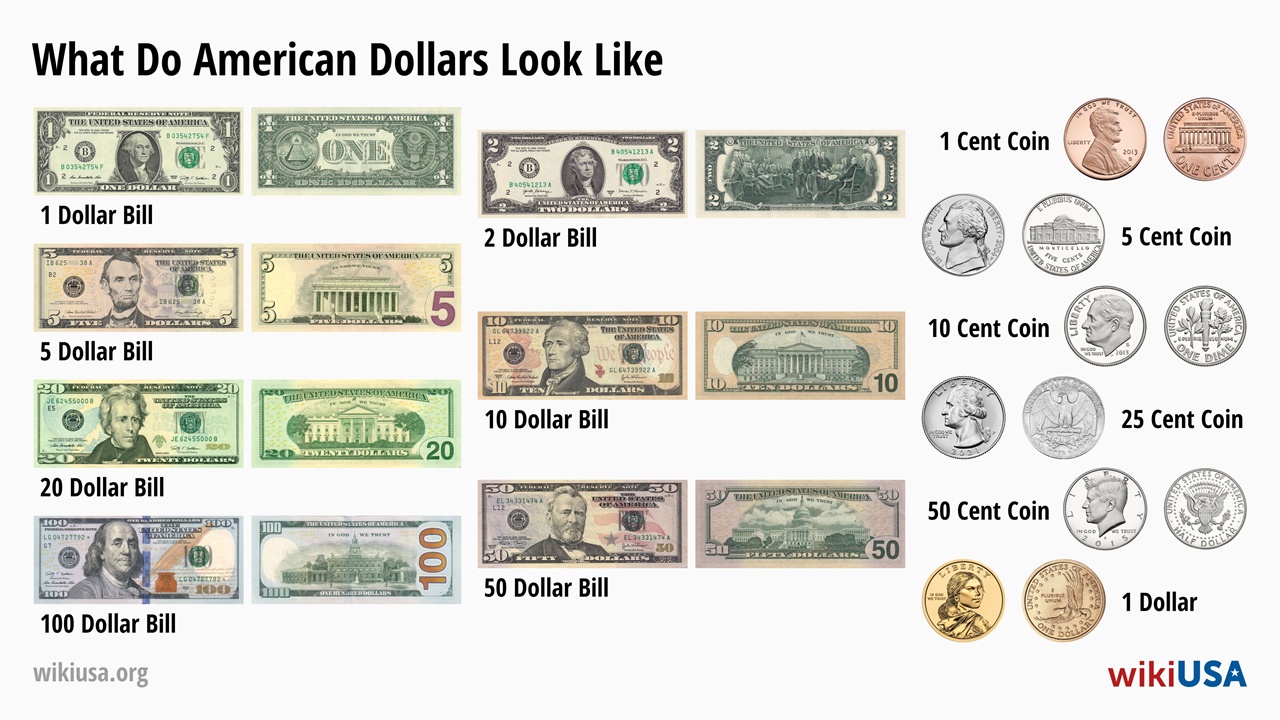

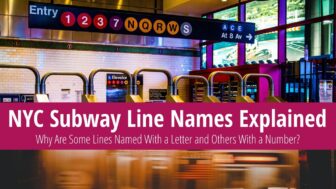
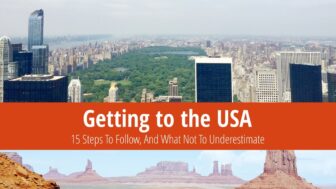

Contribute with Your Question or Personal Experience